#longpost -
Explore tagged Tumblr posts
Text
i really thought this was some weird Hunger Artist retelling
I spent a lot of time handcuffed and in a cage in high school, for a charity bit the grocery store I worked at would do
the bit was that I was "put in jail for having too big a heart" and customers could donate to my bail to get me out (and the money would go to a children's hospital or something)
now. I was very clearly a teenaged employee handcuffed inside a large cage. and I would honestly tell people that I had been in there for hours. and people would say, that's terrible! that's awful! and I would show them my wrists red from the tight handcuffs, and say but I'm sooooooo close to making bail.
and then they would dump some cash in the basket, I'd thank them, and they'd walk away.
and every so often, one of the managers would come by and collect some of the cash, so I could keep being soooooo close to making bail.
I was very good with this bit. Parents with small kids would pay $5-10 if I told their children I had been placed in jail for not cleaning my room/doing my homework, etc. For people in their 20s, I'd threaten that I was very bad at playing the harmonica, but I WOULD play it and we'd all suffer unless they paid me. and for the most amount of money, older men in suits would almost always pay $20s if I avoided eye contact and stammered a lot.
eventually, the managers started to feel bad because I was in the cage so fucking long and often, that I'd need someone to brace me when I got out because I'd have no feeling in my legs. wobbling like a newborn giraffe.
but I would also rake in at LEAST $100 an hour in charity.
so they were like, hey champ. can we, uh, give you a pillow to sit on. in the cage. would you like a pillow so you're not just sitting on a cold metal slab. can we give you a pillow.
and I had to explain to them that if they gave me a pillow, people would think I was more comfortable, so they wouldn't feel as bad, so I'd bring in less money.
the compromise was that they'd bring me a nice coffee every couple hours, which I would have to try to block with my body from the customers.
all this money went to charity. that's what the money was for. it's what was on the sign. but how much they were willing to pay was very contingent on how comfortable I looked, never mind the fact that I was still a teenaged employee handcuffed inside a cage.
and out of the dozens of shifts I did this on, not ONCE did ANYONE say, hey kid I'm going to go talk to your manager because what the fuck is going on here. they would just drop money in the basket, and I'd thank them and sip from my secret drink.
I actually had people get MAD at me that I told them I was far away from bail, they donated like $15, and then 20 minutes I got let out because my shift ended.
again. the money was for charity. it was on the sign that was very clearly placed on the upper half of my cage.
so yeah. even when people think they mean well. people can be really, really fucking stupid.
57K notes
·
View notes
Text




Now in the BioWare Gear Store:
Heroes of Thedas art print set
"A tribute to your story as The Warden, Hawke, The Inquisitor and Rook From facing the horrors on the Deep Roads to discovering frightful secrets beyond the Veil, players have been shaping the fate of Thedas across four Dragon Age games. The Dragon Age Heroes of Thedas Art Print Set pays tribute to this journey. Each piece is dedicated to one player character and their story: The Warden Inspired by the opening cinematic for Dragon Age: Origins, this artwork is a tribute to where it all began: in the darkness of the Fifth Blight. Hawke A love letter to Kirkwall and its icons, this print pays homage to the City of Chains and the legends that arose from it. The Inquisitor A vision in green that hints at the story of demons pouring from the sky—and the heroes that put an end to the terror they brought forth. Rook This artwork is a glimpse of the story of Rook and the Veilguard, Thedas’s newest heroes, who defied the gods and saved a battered world." [source]
You can get 20% off in the BioWare Gear Store until March 21st using my discount code BWROOKIE. After that date check back here for a new code. alternatively, you can use my tracking link.
✧d(•̀ v•̀ )~~♪
#dragon age: the veilguard#dragon age the veilguard spoilers#dragon age: dreadwolf#dragon age 4#the dread wolf rises#da4#dragon age#bioware#video games#feels#long post#longpost#morrigan#queen of my heart#alistair theirin#fav warden#solas
200 notes
·
View notes
Text
Kayla will never tell her older brother in a million billion years. Plus one extra.
But she knows more about Lee Fletcher than he does.
It is not something she did on purpose. Nor is it information she necessarily wants, she most certainly did not ask for it. Nor is it information she will offer.
She will not tell him that she knows the crumple of Lee’s face when he tells a lie. She will not tell him she knows the stark pain in his shoulders at the end of the day. She will not tell him she knows the grooved scars on the palms of his hands from bitten-sharp nails. She will not tell him she knows the sounds of his quiet, pillow-muffled sobs as well as or better than she knows the sound of her father’s voice.
Instead she will watch him. And she will meet Lee’s tired eyes. And she will nod to him, and he will nod back, and they will both look at Will, exhaling.
———
The first time she sees him she is hallucinating.
Genuinely. Medically diagnosed and everything.
“Kayla,” Will whispers, and there is a strain in his voice, as there always is when one of them is sick. “Kayla, dolly, the cloth needs to stay on your head.”
“Cold,” she sobs, “please, Will, I’m so cold.” Dolly. Dolly. He calls her dolly when she’s crying, when the tips of her fingers are bleeding and her knees are scraped raw and she screams if he gets too close to her. “‘M so —”
Her teeth clack hard together so hard her mouth glues shut. And the ice in her finger and toenails fires up her veins and pricks through all of her capillaries, turning her solid, and it burns, and it aches, and she bawls enough that acid burns up her throat and dribbles down her chin, down her shirt, in her bed. And over the heart pounding in her ears she hears her older brother exhale a soft little broken moan and choke it back just as fast and his always-warm hands brush over her cheeks, and she groans and squirms away from it and cries harder, and he whispers “Hold on, dolly, the fever’s almost broken, I can feel it,” and she opens her eyes and he is there, hair longer, hair neater, lab coat starched and collar covered in old Star Wars stickers, bulky glasses barely clinging to his face, tears soaking his long, angular face.
And Kayla squints, and the freezing ice recedes ever so slightly, sparking just under her skin, and she tilts her head, and she stares at him, at his freckle-free face, and whispers, “…Will?”
And he squeezes his eyes tighter and begs, “One more time, kiddo, I’m so sorry. One more time. I can’t help you if I can’t touch you. Pull back the light, baby, I can’t see, you have to control it just a little more. Just enough so it doesn’t burn. Please.”
And she squints again and Will-not-Will wavers, and the infirmary lights blink off his tears, off the lens of his glasses, and the. she squints again and the lights are dimmer, and the lab coat is gone, and his hair is frizzier.
“What,” she croaks, and Will pats her hair, and his hands are rough like she’s used to, and his round face is wet, and his scrubs are barf-stained, again, and he is smiling, tears dripping into his mouth, bright blue eyes clear, and he laughs and touches his forehead to hers.
“One-oh-one,” he whispers, shoulders shaking. “You’re safe, dolly. Your brain is out of the oven. Gods. Holy shit. Holy shit, Holy God, Holy Hera.” And he starts to pray.
She exhales hard, exhales, and forgets about it.
———
The next time her brain is not cooking hard enough her proteins are denaturing.
The next time she is sleep deprived, which does not help her determine reality.
She is lucid enough to notice the change, though.
She should not be awake. This much she knows. Will had sent her to bed hours ago, a half-hour after Austin and a full hour after the kids — as is her right; she is a full 13 years old — and she went, not without grumbling. And she meant to sleep. She usually does. But the moon was bright, and unusually warm. And the fairy lights twinkled with twice as much laughter than usual. And the audiobook her daddy sent her was just so enticing, just so flowery and beautiful, and as she listened to the gravel-low voice of the woman narrating and stared out the window she could see it playing out, plain as day, over the silver-washed hill of Thalia’s tree and the gentle giggling of the Atlantic waves.
She’s not supposed to be up late enough to watch Will creep in.
But she is, and that’s that. She hears the creak of the rickety screen door, slow like he’s trying to keep it quiet, and holds her breath, careful to make all her muscles react to keep her from being seen. The cabin is big but not that big and she sees him quickly, out of the corner of her half-closed eyes, tiptoe careful across the wooden floorboards, hopping over the noisiest ones, resting at the side of each of their beds and waiting, watching at the ends of them, shoulders dropping, eyes blackened and eyebags heavy. After a moment at each he reaches out his burned hands, resting gently on her siblings’ foreheads, and closes his eyes, exhaling, letting the fiery warmth from his palms spread slowly through their veins, wrapping strands of sunlight neatly around them like spider silk. As it recedes he sighs, in exhaustion or relief, and holds his hand, for a second, breathing in, breathing out, and moving on.
He comes to her last.
She has relaxed her breathing by then. She is thirteen years old and remembers every day of it; knows how to twitch her muscles and murmur in gentle sleepiness, knows how to breathe til her heart goes slow and flicker her eyelids so her face shows its dreaming. Daddy checks on her too, when she’s home, and she likes to stay up for him, likes to wait, likes to savour the feel of his string-callused fingertips and soft cool palms.
“I know you’re not sleeping, you little twerp.“
He flickers again — she sees it this time — and the heat of his hands fade a bit. His face gets a little longer, chin a little pointier, and the wild curls around his head mellow into something wavier, something gentler and more tamed. The glasses balancing on his wide nose are unbelievably thick, thicker than Julia’s whose prescription is a joke, and make his blue eyes look buggy, beetle-shaped. He’s got half as many freckles but that could be the moonlight. His smile is the same.
“I know what REM feels like, you know.”
She says nothing and keeps breathing. He sighs. He strokes a thumb against her forehead and it is familiar, and she knows, immediately then, that it is her brother who strokes her, who guards the foot of her bed.
“I’m gonna go get ready for bed. If you’re not asleep by then I’m gonna smother you, ya pain in the ass.”
He pulls away and she watches, follows the thwack of his falling-apart Converse, the rise of his gentle humming. He pulls tiny bathroom’s door shut and the humming swells along with the fireflies, echoing soft and melodic in the kind-of-big cabin, and she means to stay awake, really. She wants to watch him transform again, wants to watch his shoulders grow back and his spine stretch straighter. Wants to see the familiar roundness of his cheeks.
But his voice is so beautiful, and the scrape of his toothbrush is as rhythmic as ever, and the moon is so high in the sky. Her audiobook fades to silence as she slips away, warmed, into the cradle of her bed.
———
The third time she sees him there is no excuse.
It is the dead middle of summer and he is exhausted. The camp swells with the sum of them all, with the drum of running footsteps and crashing swords and crowing laughter. Her brother lives in the infirmary, practically; no matter how many times he is dragged out he keeps sneaking back, keeps slipping out of his friends’ sight and falling right back into his scrubs, hair pulled back.
“You are not supposed to be here,” Kayla says crossly. “Your shifts are done for the week.”
He smiles guiltily and the change is immediate. The slant of his shoulders is identical, the curve of his grin is unchanged, but the glossiness of his eyes fades away, and the strange ghost of her brother takes full shape. He is different, in the clear sunlight. A familiar stranger. He grins at her widely and turns on his heel, strolling to the mortal medicine cabinet.
“And who died and made you head honcho, Sunshine?” She blinks in surprise, glancing down at her hands. That is a new one. Sunshine.“It’s the busy season. I’m only keeping up with demand.”
“You’re gonna wear yourself right out,” she hears herself say. “Right out, and then what?”
“And then the sun will keep shining,” her brother says. “Besides, you’ll be taking over in no time. You’re already better than me, squirt.”
It’s an odd thing to say — she isn’t. By virtue of her parentage she can heal, and she can sing the hymns. But her strength is in her bow and her violin; her strings, not the stretch of bandages or shine of the suture. Will knows it. This brother, though, the one who stands in his place, is not speaking to her.
“I am?”
“‘Course. You know anyone else who can drag an errant soul right back into a body?”
Yes. She’s seen Will do it on more than one occasion, on more than one justification. She’s seen how it makes Chiron’s lips tighten and the atmosphere go dark. There is healing, and then there is blasphemy and challenge. Will walks the line like no one has since Zeus struck the challenger clean off the Earth.
This brother is not talking to her.
“Am I really going to take over, Lee?”
She says it carefully, because she isn’t sure. There are no pictures and Will tells no stories. But she hears whispers, sometimes, from the scattered few who knew them both, who watch Will corral the lot of them to breakfast or take the reigns of the chariot or calm hysterics with a touch, who whisper: “Sometimes I look at him and it’s like seeing a ghost.”
Her brother smiles a wide thing at her. It is as soft as she remembers. “Course, baby. No doubt in my mind.”
———
The fourth time she sees Lee Fletcher, she makes him come.
She waits very carefully. He comes when Will’s tired, she hypothizes. When his own strength won’t stand. So she waits, for the second wave of camp flu, for his lead on the climbing wall, for the rare nights when Gracie gets cranky and homesick and stomps around the cabin, throwing things and yelling. She waits for the look in his eyes, for the glassiness to smooth into something soft and reverent, something timeless.
It does not come when she expects.
The fourth time they are sitting together. Or, Will is sitting, legs tucked under him on the side bench, and Kayla stands, breathing careful, arms pulling elastic taut.
Her third missed shot, he is behind her.
“Relax you jaw,” he suggests. “Your tension is throwing you off. Let yourself hit the edge — it’s a new challenge, kid. No need for a bullseye.”
“I always get a bullseye,” she argues.
Lee smiles. His eyes are different, she realizes. They’re — constant. Blue. Like hydrangeas.
Will’s change with the sky.
“Bullseyes are a process.” He puts a steady hand on her elbow, tilting it slightly. “You gotta aim for the bigger picture before you focus on the details. The bullseye will come. Start with hitting the target.”
She huffs, scowling, but he’s right, and on her fourth shot the arrow lodges, just on the edge of the compacted wood.
Lee cheers. That, she sees clear as day, is identical, from the strain of his arms to the crow of his whooping laughter. He even does the same clumsy, dorky dance that sends him sprawling.
Kayla smiles past the lump in her throat.
———
The fifth, sixth, and seventh times pass without her counting, as does everyone one beyond. They happen in stretches and in the blink of an eye — the shapes of his mouth when he yawns, the drawl of his fed-up sarcasm. The weight of his elbow on the top of her head, grinning as she shoves him off, the shake of his deep, bone-rooted sigh when he thinks she’s asleep and his entire body strains, curled up under his favourite quilt. The weight of his ‘v’ in I love you.
She almost stops looking.
“What did he look like?” she blurts, one evening when he takes them to the beach. The rest of them are up ahead, Austin chasing the younger ones up the muddy sand.
Will freezes, just barely, then walks on with a forced lightness, swinging his loose arms between them.
“Who?” he asks, voice light.
Kayla gnaws the inside of her cheek.
“Your older brother.”
“I had four, at one point.”
He says it quiet like he does at the campfire, when it’s only the older kids left but she’s managed to stick around, holding her breath so they won’t notice and send her away. When Will lies back on a log and matches his breathing to the flames, eyes unseeing, and Annabeth watches him carefully and whispers, “Play us something, Will.” And he picks up the guitar he keeps dusty under his bed and sings something soft like there’s no hardness left inside him. No bowstring.
“When he laughed, you could hear it across camp,” he says quietly.
Kayla had not specified which brother but he knows anyway, had been waiting for her ask, and she strains to hear, now, leans in over the turn of the waves and shifts of the sands and strives for every note, every chord of his voice. “He invented a full name for me so he could holler it when I got in trouble. William Andrew.”
“I didn’t know he made that up.”
A ghost of a smile turns Will’s lips. “Yeah, it stuck real good. Even Chiron forgets I wasn’t born with it, actually. He yells it, too.”
He tilts his heart to the sky and stares at the clouds, exhaling, hands still by his sides.
“I was his favourite,” he says finally. “He wasn’t supposed to have anybody, but he loved me. He watched me real careful. He was —” he swallows — “I loved my brother, you know. To the sun and beyond it.”
He stops, turning to the waves. She lets him and watches his back, watches the shape of his scapulae under his camp shirt.
“I wish I still had him.”
The air shifts beside him, then. She sees Lee next to him, this time, not in place of him, with a broad hand on his shaking shoulder, a tanned forehead pressed to his temple. He turns to her, when Will breathes normally again, and winks, blinking back away as the clouds move from the sun.
“I think he’d be real proud of you.”
“Yeah?”
Kayla hesitates. “I mean — yeah. You’re like him, you know? You stand like he does.”
Will is smiling, softly, eyes red.
“I’ll have to show you a picture of him, sometime.”
“Yeah.” Kayla smiles, exhaling deeply. “Yeah, I’d like to see him.”
#very very experimental but i want to try#pjo#percy jackson and the olympians#hoo#heroes of olympus#pjo hoo toa#kayla knowles#will solace#will solace & kayla knowles#lee fletcher#will solace & lee fletcher#lee fletcher & kayla knowles#siblings#grief#will solace angst#my writing#fic#longpost#this is barely edited i’m so tired#im sure be annoyed about the various errors in the morning#whatever
173 notes
·
View notes
Text
Mithrun Revealed in Five Keywords
5 keywords section from the Adventurer's Bible, this is transcribed from the EHScans translation for more info you can check this post. My own notes will be at the end of the post.
1. The Canaries
The Canaries are an organization that is sent in to investigate and pacify a dungeon once it has surpassed a certain level of danger. Their original name is the "Dungeon Investigation Squad*." The squad consists of wardens sent from various esteemed houses, along with convicts who have been involved in some way with ancient magic. As a matter of fact, the convicts are not able to use magic without permission from their warden. For that reason, if the wardens end up being killed first, that leaves the convicts unable to use magic. Therefore it's a very common outcome for the convicts, without any means to protect themselves, to follow the fate of their wardens. Incidentally, their name "Canaries" comes from the bird, which is taken by miners in order to signal as quickly as possible the presence of deadly gases or other dangers. That nickname was given to them by the general public as a mocking way of describing their mission. The design of the bird on the bow of the ship is assumed to be a canary by most of the squad members, but in actuality it is a skylark, a bird that signals the advent of spring.

2. Lineage
Mithrun was born into the House of Kerensil, a famous house that is involved in investment and other such ventures. Kerensil is a famous enough family that almost any Western elf is likely to have heard their name.
3. Utaya
After being rescued from the dungeon, Mithrun spent a while on death's door, but he slowly but surely recovered enough to lead a normal life. The impetus for Mithrun's hard work was the incident that happened in Utaya. Mithrun feels that "if I had been there, we could have done something about that demon," and that thought is what gave him the strength to return to duty. A great number of squad members died in the Utaya incident, and others retired afterwards, leaving the Canaries short on members. For that reason, Mithrun was appointed as captain immediately after recovering.

4. Older Brother
Mithrun has an older brother, but he hates him quite intensely. When Mithrun was entranced by the demon and became the lord of the dungeon, the cause was the vision within a magic mirror of his brother looking happy. After Mithrun sustained his life-threatening injuries, he has visited his brother once every 5 years or so**. His brother has told him "Come back and see me whenever you want."

5. Desires
Mithrun's desires have been eaten by a demon. Though he has lost his desires, his daily routine still remains in his head, allowing him to live a normal life. However, when he enters a dungeon, his desire for food and rest have a tendency to weaken. For that reason, his squadmates or Kabru need to keep an eye on him.
------
*Official english translates it as "Dungeon Investigation Unit" instead of "Squad", original is "迷宮調査隊". I personally like Squad better.
**This gave me a headache for a while but as far as I can tell the original doesn't specify who visits who. EHScans assumes Mithrun visits and official english assumes his brother visits. The important part is that they meet and his brother invites him to come back home.
Stats
Timelines
Official version bellow the cut

#Dungeon Meshi#dungeon meshi spoilers#Mithrun#adventurers bible#keywords#five key words#delicious in dungeon#dunmeshi#long post#longpost
51 notes
·
View notes
Text

yay anyone who wants to can do it, im too sleepy to tag rn xD
fuck it. worm on a string picrew chain. let's fucking go

happy worm creation my friends
tagging @areyoudoingthis @cursed-coat-of-homosexuality @peanutbutterex @tfemteach @piratecaptainscaptainpirates (no pressure 💛)
13K notes
·
View notes
Text
I feel not enough people are aware of Ernst Haeckel's Artforms of Nature (Kunstformen der Natur, 1904).

Foraminifera (plate 81)

Ciliates (plate 3)

Mosses (plate 72)
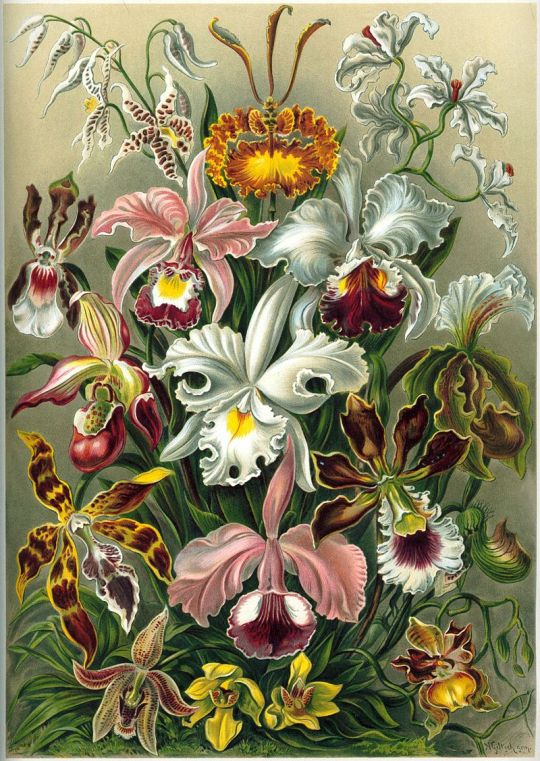
Orchids (plate 74)
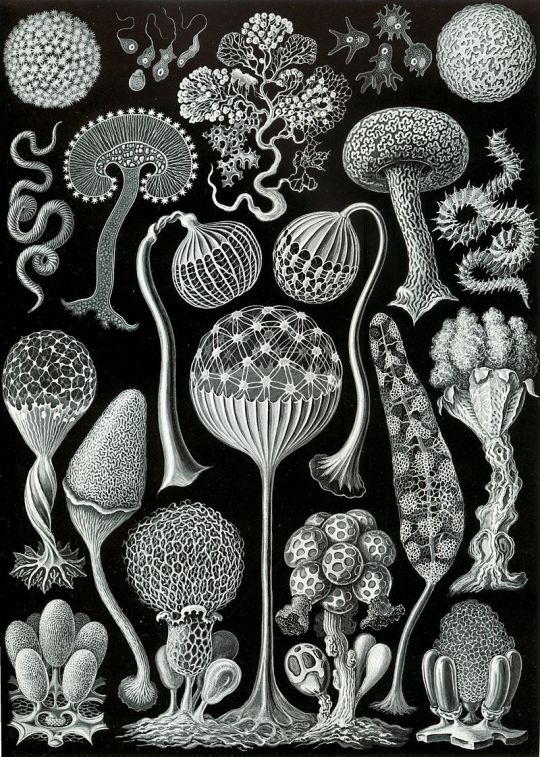
Mycetozoa (slime molds, plate 93)
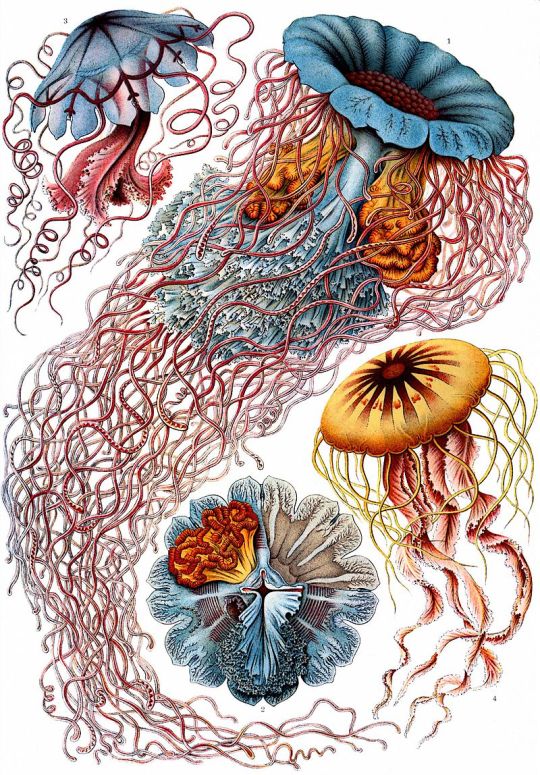
Discomedusae jellyfish (plate 8)

Siphonophorae (plate 37)

Ringed worms (plate 96)
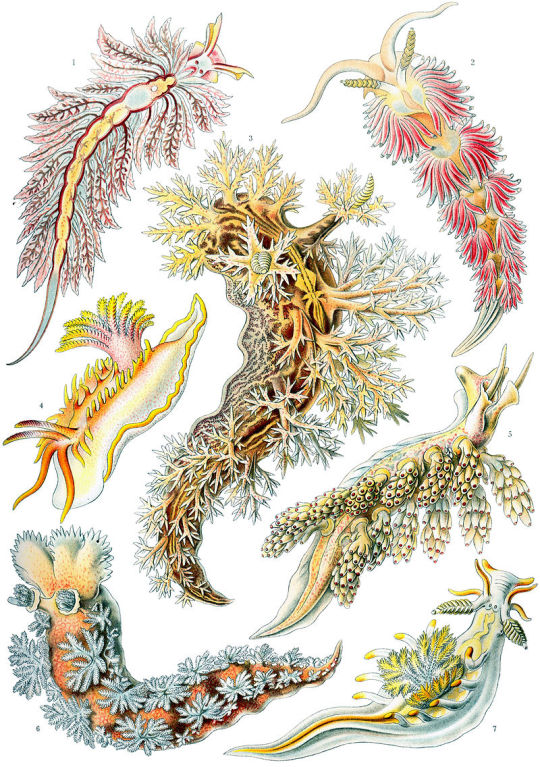
Nudibranchia sea slugs (plate 43)
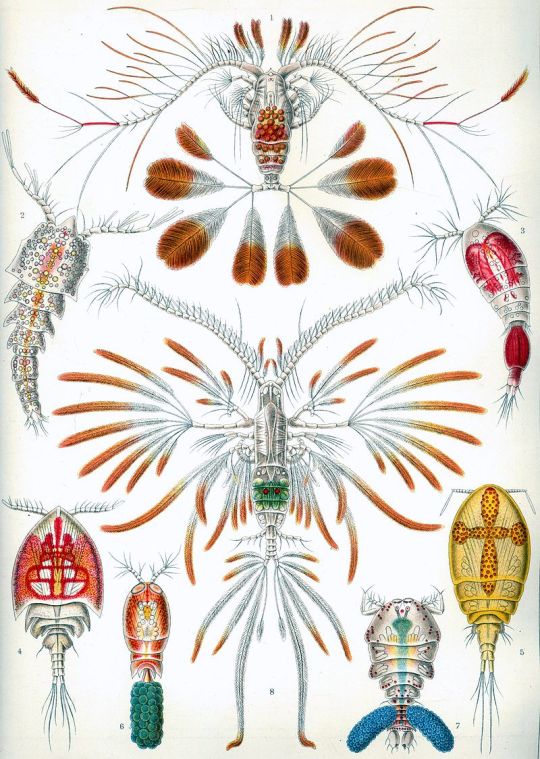
Copepods (plate 56)

Crinoidea (sea lilies, plate 20)

Ophiuroidea (brittle stars, plate 70)

Boxfish (plate 42)

Hummingbirds (plate 99)
37 notes
·
View notes
Text








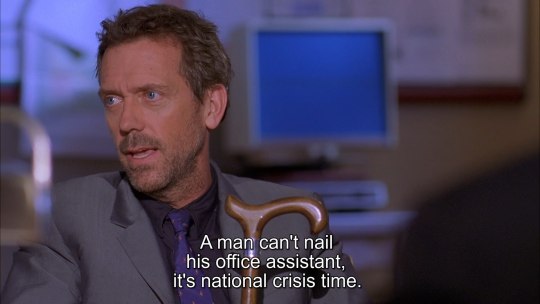


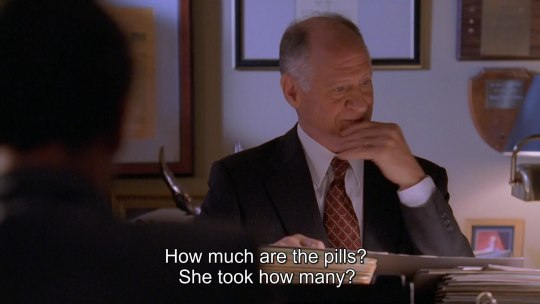
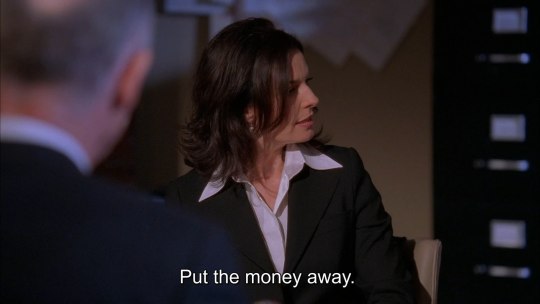


folk hero really
#house md#gregory house#stacy warner#Peter Foster#screencap#s02e10 “Failure to Communicate”#longpost#yeah bribe him in 5s#maybe throw in some viagra too fuck it#long post
49K notes
·
View notes
Text
Stuffed Animal dashboard simulator

🐻feltedfur Follow
pray for me human put me in the wash on fucking hot water im never gonna be the same colors
23 notes

🐇velveteen-everything Follow
got left outside in the backyard but this is kinda nice actually im okay with this (:
🐇velveteen-everything Follow
the hawks
14.1k notes

🐉shinyscales Follow
this is bullshit ive been bragging to everyone in the toy chest because my tag says i was made with love but i got torn today and guess what. its just stuffing inside
🥽pooltoy82 Follow
lol imagine having stuff inside you lmao
🐉shinyscales Follow
i literally see you outside the window looking smug. log off
4 notes

🦭 sealofapproval Follow
FELL OFF THE BED HELP HELP HELP HELP
🐭 m4m4_p0ssum Follow
WHY ARE YOU POSTING ON PLUSHBLR INSTEAD OF KEEPING WATCH FOR MONSTERS THATS YOUR HUMANS ROOM
990 notes

🐭 plushiepolls Follow
🐉shinyscales Follow
lets not spread body dysmorphia on plushblr guys
🧑 thatoneweirdhumanplushie Follow
op casually ignoring stuffed animals with different colored fabric for eyes
▶️ stuffedyoutooz Follow
some of us dont even have eyes!
13k notes

🐶 newdogtoy22 Follow
i know animals are allowed to see normal plushies moving and talking but whats the rule for dog toys.
▶️ stuffedyoutooz Follow
what breed of dog op
🐶 newdogtoy22 Follow
poodle? does it matter?
▶️ stuffedyoutooz Follow
no i just wanted to remind you your lifespan can be measured in days
🐶 newdogtoy22 Follow
man come on
20 notes
35K notes
·
View notes
Text





a comic about OCD
20K notes
·
View notes
Text




















9K notes
·
View notes
Text
Scammer pretending to be in Palestine v2
This post has been remade with better info! Please go to this one:
Got an ask from someone claiming to be in Palestine needing mutual aid? Unfortunately there is a scammer going around and it’s likely the ask you got sent is the same one being sent by multiple accounts who target users interacting with Palestine posts. These blogs use the text/images off a real fundraiser and then post it here pretending to be the person it’s made for. Their accounts are usually only a few days old and they don’t interact beyond the ask/follow. Lately they might make the link to their PayPal account in different colors or claim their GoFundMe is pending so you will assume the real one is theirs. They don’t have any GoFundMe’s set up. They steal from them. If you need proof of something being stolen, searching the text of their post in a search engine should pull up the source. If you know how to report PayPal accounts, please report those used by the scammers.
(Moved to new list)
Below is a growing list of fake/stolen names used across the accounts:
Nour Samar | maryline lucy | Fred Odhiambo | Jeff Owino | Valentine Nakuti | Conslata Obwanga | JACINTA SITATI | David Okoth | Martín Mutugi | Daudi Likuyani | William Ngonyo | Fred Agy | George Ochieng | BONFACE ODHIAMBO | Sila Keli | John Chacha | benson komen | Alvin Omondi | Jacinta Sitati | Daudi Likuyani | Noah Keter | Faith Joram | Rawan AbuMahady (any PayPal’s using this name are scammers who have stolen it off a real GoFundMe. The real person does not have a PayPal account that they post on tumblr.) | Asnet Wangila | Remmy Cheptau
Keep in mind this post isn’t saying all accounts asking for mutual aid in Palestine are scams. Rather, this post is meant to bring awareness of a scammer stealing money from those who really need it by pretending to be a person in Palestine. To report scams, use this:
Report -> Something else -> Illegal uses or Content -> Phishing
12K notes
·
View notes
Text
Sirius: Which one of you was going to tell me that tea tastes different if you put it in hot water
Lily,*slowly puts her book down *: Y-You were putting it in cold water....
Sirius: ....
Remus: Padfoot? Answer the question. Sirius!
Sirius: Yeah I thought for like 5 years that people just put it in hot water to speed up the tea-ification process. Didn't realize there was an actual reason.
Everyone: ....
Sirius: You think I have the patience to boil water?
Regulus: You don't have the patience to microwave water for 3 minutes????
James,*grabbing him*: Why are you. putting it in the microwave to boil it?!
Regulus: Do you think I have the patience to boil water on the stove?!
Remus: Fuck Regulus you too!!??!!
James: It takes less than a minute!
Marlene: IS YOUR STOVE TOP POWERED BY THE FUCKING SUN?????
James: HOW LONG DOES IT TAKE YOU TO BOIL A CUP OF WATER ON THE STOVE!??!
Remus: Like 7 minutes!
James: Just stick the mug on top of the stove on medium heat and it boils in like 2 minutes less than that and you use a saucepan.
Pandora *taking notes*: Everyone in this room is so creative :)
Dorcas*turning to Remus*: So no one in your house uses a fucking kettle!?
Remus: Its right there near the stove!!
Sirius: Wait a second... that's used to make tea??
Regulus: You told me it was there for aesthetic!!!!!!
James: So its not???
#james potter#sirius black#regulus black#remus lupin#lily evans#marlene mckinnon#dorcas meadowes#pandora lovegood#dead gay wizards#marauders#wolfstar#jegulus#dorlene#pandalily#longpost#black brothers
6K notes
·
View notes
Text

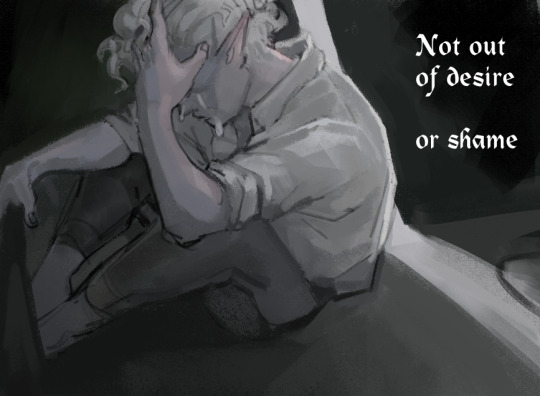

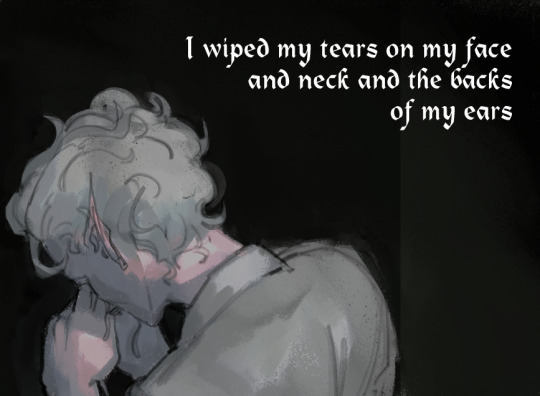
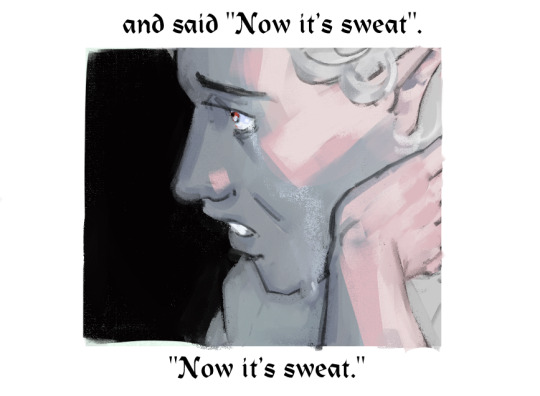
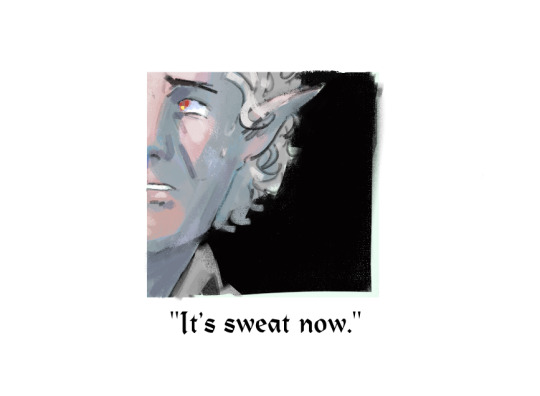
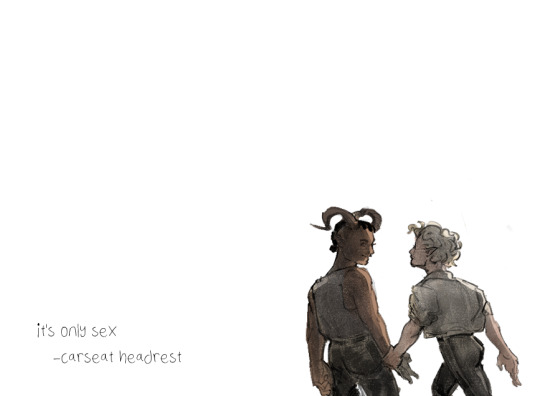
"It's only-"
#longpost#bg3#wyllstarion#wyll ravengard#astarion#baldurs gate 3#lyric comic#standing on my lil soapboc and crying#guys guys i worked rly hard on this be nice to me plz#i know its angsty but its good right#right#rolls around in my angst pile#lyricstuck#finally its only taken like#5 years
3K notes
·
View notes
Text
Excerpts from [this] Entertainment Weekly article:
"[Jennifer] Hale believes one of the biggest misconceptions about what they do is the skill required. "The work we do in games — this does not cover performance capture but in voice capture — is 85 to 90 percent cold reading," she says. "The entirety of Mass Effect, I saw no line before the moment I recorded it. It was all cold reading on the spot. A couple takes, maybe a few, and it goes out to market. That's it." She notes that this scenario isn't much different even now. "So voice performers have to be incredibly skilled in the game arena, even more so than in other arenas," Hale continues. "It's extraordinarily demanding." With Mass Effect, one of her more widely recognized projects as the voice of Commander Shepard, Hale remembers a specific experience when she attended the 2010 Spike Video Game Awards (a predecessor to today's Game Awards) as a nominee in the "Best Performance by a Human Female" category. "A voice performer was very much treated like the utensils on the table," she describes. "I really appreciated being invited, but I had an experience where I waited and waited and waited for my category to be announced. I had a 6-month-old at home who I was still nursing. I really was watching the clock. I finally sought out the stage manager toward the end of the show. He goes, 'What's your category?' And I told him the category. He said, 'Oh, we taped that earlier with the winner.' The dismissiveness of it — definitely I felt that.” However, Hale prides herself on the discipline she developed over time to focus less on those moments and more on the wins — and there have been clear wins in changing the perception around the acting part of the craft, something she has seen happen more in the past five to seven years." [...] On the same topic, Hale looks back to the evolution of voice acting between the releases of Mass Effect (2007) and Mass Effect 2 (2010) alone. "In the beginning, the visuals technologically were where they were, and we had to be slightly presentational to push what was happening," she notes. "But as those visuals became so much more hyperrealistic, we could actually drop back and do one of my favorite things. Thought registers on camera. Now we're in the space where we can relax and allow thought to just register on the mic." [...] [UPDATE: Just hours before this article went live, SAG-AFTRA told its members in a memo that the companies' latest proposals contained "alarming loopholes that will leave our members vulnerable to A.I. abuse."] Newbon agrees A.I. is a real problem, but folks like Hale and Goldman aren't so concerned with A.I. replacements. They're confident players are more prone to connect with a character if there's a real performer behind it. Kniebihly agrees. "There's no doubt that the industry is going through a challenging time. Layoffs, budget cuts, and uncertainty have made it clear that nothing is guaranteed — even for successful studios," he says. "To me, what makes this job interesting in the first place is that weird, intangible chemistry between an actor and a director. It's the trust at the core of that relationship that pushes everyone to give the best of themselves and creates more than the sum of its parts. And I'm not going to get that from A.I. anytime soon.""
[source]
113 notes
·
View notes
Text
The oak wood Grandfather clock in the back centre of the Athena cabin is deafening; tick, tick, tick. Each crack of the heavy gold hands reverberates, pinging off the walls, off the tucked-away metal bunks, each ladder rung scraping off the floor right after; tickscritch, tickscritch, tickscritch. Annabeth’s breathing is timed perfectly, beautifully, with every second of the clock, enveloping the sound with the whoosh of her measured inhales; hhhhtickscritch, hhhhtickscritch, hhhhtickscritch; the puff of her minute exhales; hhhhtickscritchfsss, hhhhtickscritchfsss, hhhhtickscritchfsss.
Everyone else holds their breath.
hhhh
tick
scritch
fsss
hhhh
tick
scritch
fsss
hhhh
tick
scritch
fsss
“Okay,” Annabeth says, voice like a crack of a whip in standstill morning air.
Three people scream.
She looks up, grey eyes flitting between the gathered campers, narrowing at the tense space between them, the pounding hearts audible even over the clock.
Will bites back a smile.
“Oo-kay,” she tries again, shaking a tired head. “I think I’ve figured it out.”
Cecil, bless his brave heart (or perhaps his idiocy, they’re often easy to conflate) is the first to recover. “Really? That seems…complicated. Even for you.”
Ah. Idiocy.
Will slaps his hand over his best friend’s mouth and pinches him hard by his ribs.
“Forgive him,” he says apologetically, scooching them both gently away from the twitch of Annabeth’s eye. “He was neglected as a child and often speaks out of turn for attention. He knows not what he does.” He easily ignores Cecil’s muffled hey! over the sound of barely-concealed giggling. “Also, he’s my best friend, and if you kill him I’ll have to kill myself in solidarity, and then who will heal you?, et cetera, et cetera.”
Annabeth sighs. She taps her foot. She sighs, glaring one last time before returning to her maps. “Keep him muzzled, then, Solace. There’s only so much insolence I can take.”
Will nods. “Ever so kind, Annie.” She whips her head back up, murderous, but Will has already ducked behind Clarisse, biting back his snickering and hushing Cecil when he laughs.
“You’re a nasty hypocrite,” Cecil whispers finally having managed to wiggle himself free (licked Will’s hand and Will shoved him).
Will shrugs, face angelic. “Whatever do you mean.”
Clarisse, without so much as glancing backward, stomps on Will’s toes. “If I miss her list of Jackson’s weaknesses because you two are blabbing, you die.”
Will scowls at her, hopping on his non-maimed foot, cradling his poor mangled sneaker with his free hands. Ow. “Alright, alright, Jesus.” He sticks his tongue out as soon as her back is turned. She knows, somehow, and reaches out and fuckin’ punches him, easy, no sweat, full force.
Ow squared, what the hell.
Cecil snickers at him, nudging his toe against Will’s prone form and rudely ignoring the agony spreading from his stomach. Wow. He could die, right here, right now, staring at the dust bunnies in the corner of the Athena cabin, and that would be the last thing Cecil does for him. Kicks him while he’s down. What a legacy.
“I’ve met your dad, and I want you to know, empirically, that you’re worse.”
“That’s an evil thing to say to me,” Will wheezes. His spleen is still hanging out somewhere around his throat. Clarisse is lethal. He forgot his rule: always make sure you are within the safety bounds before bothering Clarisse. This is why he is unfit to lead a cabin. He forgets his rules.
“Whenever you’re done,” drawls a voice. The minor crowd of demigod clears a straight aisle right to where Will is suffering, because loyalty and class solidarity mean nothing to anyone, apparently.
Will curls up tighter. “I could use a few more minutes, actually.”
There is a scoff, and the sound of flannel sleeves being rolled up, and Will is fast but unfortunately also committed to the bit and does not scramble away in time before he is airborne, collar of his shirt choking him slightly from where Clarisse has fisted it and from where he is dangling. She shakes him, which does not help the choking bit.
“I have impunity,” Will manages, mentally begging forgiveness from his trachea. Annabeth huffs and waves her hand, allowing his release, which doesn’t work because Clarisse doesn’t take orders from Annabeth, so Will sucks in as much breath as he can and tries instead, “Let me go or I’ll sonic on a frequency so specific every one of the Ares landmines will deactivate,” and Clarisse grunts and mutters “Can’t sonic if you’re dead, you little punk,” but does indeed drop him. Will grins from the floor, rubbing his throat.
“I knew you loved me.”
She moves menacingly forward, and this time he speeds away, hiding behind Butch. Butch will protect him.
“You’re lucky you’re cute,” Butch grumbles, so Will turns up his charm to eleven, smiles including his best dimple, and diplomatically refrains from reminding the son of Iris that unfortunately calling Will cute violates Section Four of the I Know He’s Hot I Got Him First Back Off Act and could result in his zombification.
Politics. He’s great at ‘em.
Annabeth leans forward slightly, easily making eye contact from where they both easily tower over Butch (who notices and rolls his eyes. Rip in peace). “Dude, you’re supposed to be the responsible one.”
From across the room, Kayla laughs out loud, which is Rude, so Will ignores her, holds up a hand, and loudly removes the badly crinkled paper from one of his (many) pockets, tries (unsuccessfully) to smooth it out on his thigh, holds it up next to his watch, and squints until the numbers stop moving.
“Actually, according to my schedule —”
“You mean that blank post-it you just found?”
“—I have four point seven hours before my next shift starts. Responsibility is a distant dream.” He carefully folds the paper back up (crumples it into a ball) and returns it where it belongs (chucks it over his shoulder). “So, there.”
Annabeth stares at him. He squirms. She stares some more, he squirms harder, and before she can stare some more and Will vibrates out of his skin, Ellis loudly says, “I can just kill him, if we want, then we can move right along.”
Several people mutter their agreement. Will makes careful note of who and remembers to let them suffer next time they ask for his help. Annabeth sighs.
“No,” she says, sighing yet again, “unfortunately we need him.”
There are two wolves inside him. One, a praise hungry Daddy issues whore, perks up and starts whining and scratching at the mention of being needed. The second, more rational, trods calmly off an imaginary couch, bounds up his spinal cord, walks through right into his brain, and pulls the giant red button labeled, ALERT. Unfortunately he is so busy imagining the two wolves inside of him dukeing it out that he misses his opportunity to complain, and it is only several minutes into Operation: How Our Totally Dope Alliance will Massacre the Nepobabies (Operation HOT DAMN) that Will starts, realises he’s still on the floor, scrambles to his feet, and says, “Hey, wait a second!”
Unfortunately, he is the boy who cried wolf, and is entirely ignored. Damn. Will hates it when Cecil is right. It’s so rare he honestly forgets it happens.
“Wait a — pause! A moment! Time out!”
His (SUPPOSED, but apparently everyone is a traitor forever) team totally ignores him, or at least they try to, but unfortunately for the scoundrels they have Jason on their team, this time, and since Jason is the sweetest summer child to ever summer child so long as everyone ignores his occasional midnight howling and horrible table manners, Jason turns to him, pauses, and says, “Yes, Will?”
Will sighs dreamily. “Have I ever told you I love you, Jason?”
Jason squirms, glancing fleetingly at the dusty Cabin 6 shadows.
“Uh, no. And, um, maybe continue to not.”
Will waves a hand. “Psh. He’s kidding about the murder thing. Probably.”
Jason scratched the back of his neck. “It’s not that I don’t believe you, it’s just that I’ve seen him turn someone living directly into a ghost, and I’m really quite fond of being alive.”
“Speaking of Nico,” Annabeth says, glancing up from her maps, “I have a job for you, William.”
“Not my name,” Will says automatically. The rest of her sentence clicks and he grimaces. “Is the job sitting in a tree, eating grapes and looking pretty? ‘Cus I’m real good at that.”
“He is,” offers Drew. “For all his countless flaws as a person he has really quite excellent bone structure. I love watching his jaw in action.”
Will preens, very used to selectively listening to Drew’s ‘compliments’. “Thanks, Drew!”
Coincidentally, the shadows around Drew churn and whisper. The entire team of demigods takes three wide steps away from her to avoid any association.
They’re being dramatic. Nico only every maimed someone in a jealous rage once! And it was a misunderstanding, anyway. He’s a sweetheart and a softie.
“No one agrees with you,” calls Annabeth. “And, Solace, I swear to the gods, if you keep getting distracted I’m booting you.”
“That’s ADHD-phobic.”
She cracks a smile. “Shut the hell up.”
Smugly satisfied, Will walks over to her crossed arms and tapping foot, curtsying since the situation seems to call for it and ignoring the secondary call to fall dramatically at her feet and pledge his service, as that call feels like his father’s influence and any influence from his father is evil and bad.
“Nico di Angelo is quite probably the most stubborn person to have ever lived. He lives and works for his own will only. And yet, you smile at him and ask for anything and he trips over himself to get it for you, like you have bewitched him in some way.”
“Very weird way to describe a loving relationship, but okay.”
“You —” She drags her fingers in the air in the vague shape of Will’s figure which, coupled with the chorus of wolf-whistles, makes him feel vaguely like a plump hen in a den of coyotes and also kind of like a peacock, which is a sensation he shoves immediately into a pit of repression — “are playing Makaria.”
“Hm.”
“By that I mean you will walk alone into enemy territory. You will locate the target. You will smile pretty and charm him until he lets down his guard. And then you will attack.”
“I see.”
“Kind of a whore of babylon meets James Bond thing.”
“No, I got it.” Will’s ears redden slightly at the gathered snickering. “This is, uh, the plan we’re solidly laying on?”
“Yeah,” calls out Kayla, as she is a traitor, “you think he can sashay up to Nico without tripping over his own feet and dying?”
“No one asked you,” says Will hotly. “I can — I can sashay perfectly fine, thank you kindly.”
What a world that Will is arguing his ability to sashay. Every day at Camp Half-Blood is a thrill, truly.
“He’ll be fine,” Annabeth says dismissively. “I’ve been observing them. As soon as Will gives him one half iota of attention he folds. He won’t even need to sashay.” She looks at him critically. “Really, though, dude, don’t sashay. I’ve watched you trip sitting down.”
Will flushes for several reasons. “Shut up. I’m — I don’t do that.”
“Yeah, yeah. Dismissed. Don’t let me down.”
Will walks back to his corner of cowardice, avoiding Clarisse and also various snickering pokes and pinches to his flushed cheeks. It’s — they’re not like that, are they? Distracted? Will didn’t think they were. He gets a little distracted when Nico is around, sure. Anyone would. He’s — powerful, and sardonic, and sweet, although he hates to admit it, and thoughtful and genuine and surprisingly funny. Nico’s easy to fall into.
But Will’s not — distracting. He’s just Will.
“God, your self-esteem issues are embarrassing,” Drew complains. “Do you think he follows you around because he’s ever so interested in your nerd healing rants?”
Will huffs. “They’re — interesting!”
“They’re boring, you loser. He’s gone on you. It’s impossible for even Blondie to miss.” Drew flicks her long hair over her shoulder, scowling at Annabeth’s direction. “You think he made everyone read the I Know He’s Hot I Got Him First Back Off Act for nothing?”
“I thought it was a bit,” mumbles Will.
“You — are you dumb!” Drew yanks him by the strap of his chestplate, which is Rude and Mean. “He literally stabbed Cecil last week for staring at your ass. I still think you should have let him bleed, by the way. He needs humbling.” She loosens her python grip on his straps and starts picking at imaginary lint on the bronze. “Don’t sashay. You’ll make a fool of yourself, you clumsy fuck. Just walk over and smile and say something about ventricles or something. He’ll be drooling all over you.”
“He’ll be entirely engaged by my thrilling lecture on the cavities responsible for mamillian — and beyond! — life and livelihood,” sniffs Will, pushing her hands away.
“That’s the exact kinda nerd shit you should be saying. Good.”
“I hate it here. I’m so unappreciated.”
“Whatever you say, Grape Boy.”
———
next
#hm….three parter. i’m hoping. god willing#pjo#percy jackson and the olympians#hoo#heroes of olympus#pjo hoo toa#will solace#nico di angelo#solangelo#nico/will#will/nico#nico di angelo/will solace#established solangelo#drew tanaka#cecil markowitz#annabeth chase#will solace & drew tanaka#will solace & cecil markowitz#disaster will solace#my writing#fic#longpost
140 notes
·
View notes
Text
Ryoko Kui Exhibition & ''Delicious in Dungeon'' Exhibition
"Delicious in Dungeon" Artwork
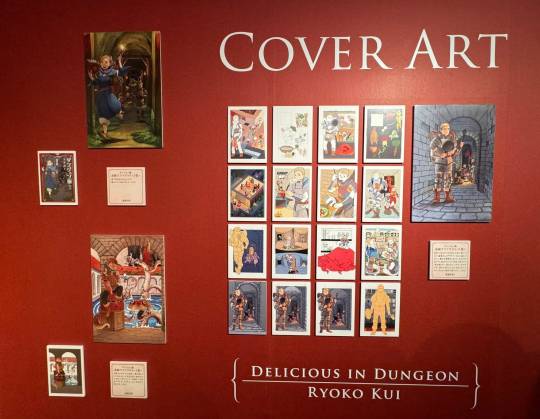
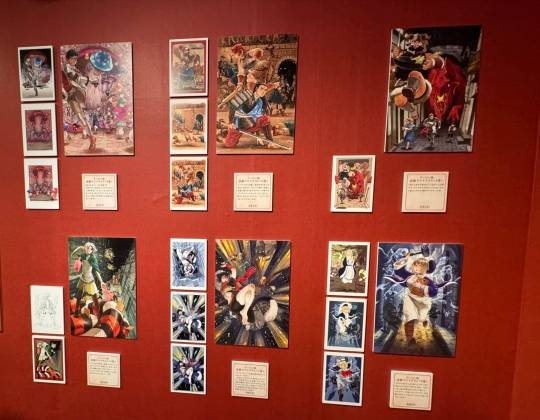

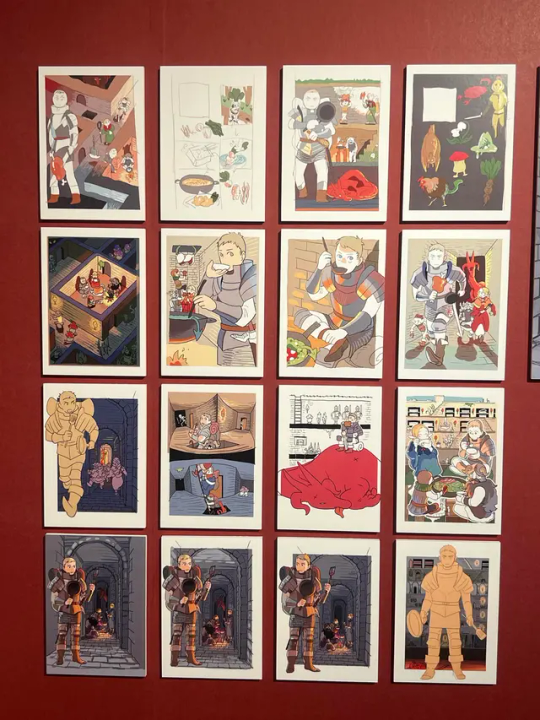
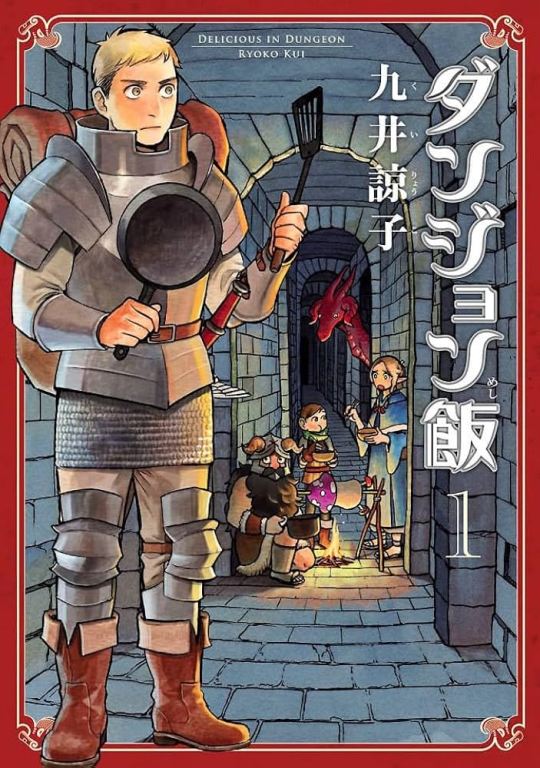
Cover illustration draft, vol. 1
Since this was the first volume, I tried out a few different drawings and had the editor and designer choose which ones they wanted, then made small adjustments. I personally liked the top-down draft, and the one of the cooking processes (back cover) the best. But looking back, I sincerely think it's good that we didn't go with those. (Kui)

Cover illustration draft, vol. 2
The format was decided for volume 1. So, volume 2 came together quickly. (Kui)
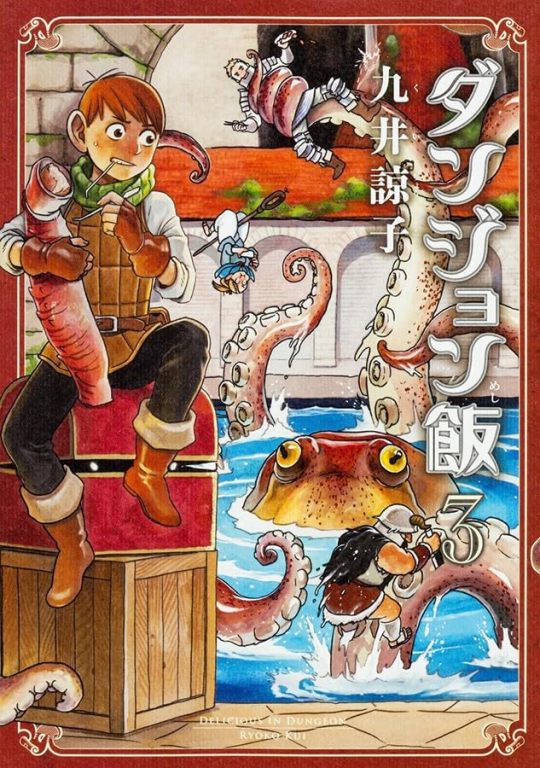
Cover illustration draft, vol. 3
I thought it might be cool to make the character Chilchuck darker in the foreground, and the background brighter! But it didn't quite work out the way I had imagined. I think it could have been a bit better. (Kui)
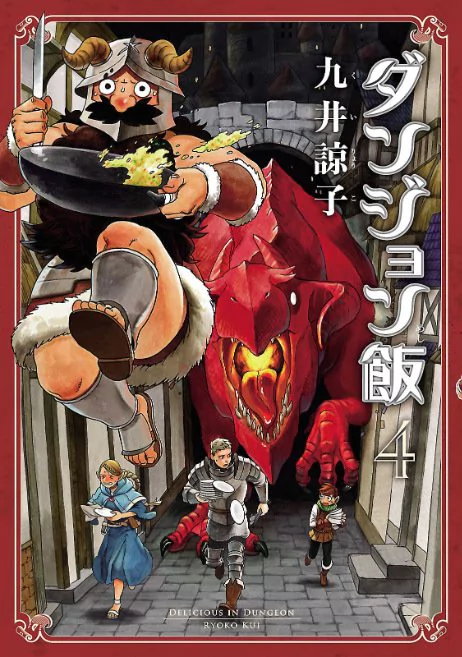
Cover illustration draft, vol. 4
I remember that the overall shape of volume 4 came together very quickly. The character Senshi's hands didn't fit nicely, so I moved them backwards and to the side. (Kui)


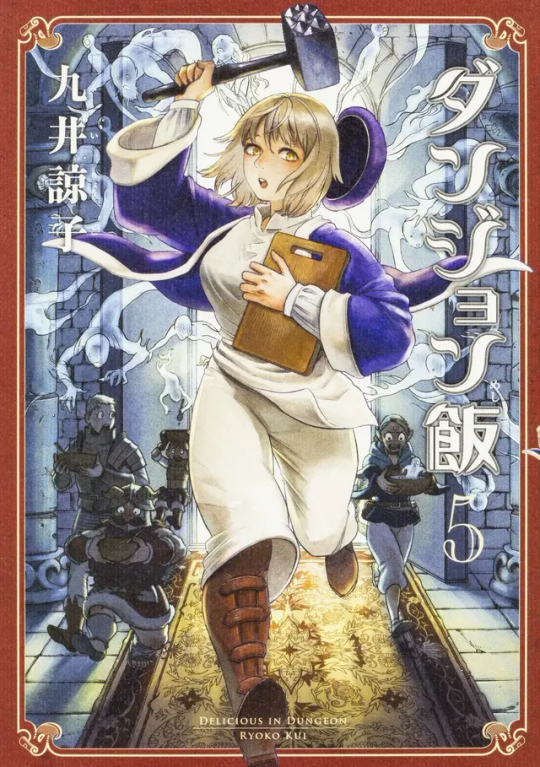
Cover illustration draft, vol. 5
I thought people might start to think "how many have I bought?" so I wanted to create a slightly different impression with this volume. I decided to put the character right in the center and try putting it together all in blue and green hues. (Kui)

Cover illustration draft, vol. 6
With the Red Dragon defeated, have we reached the halfway point in the story? With this in mind, I thought of how many volumes were left to go, and the number of characters, and decided to pair up the characters Namari and Shuroiro. In hindsight, it would have been fine to have them on one cover each. (Kui)

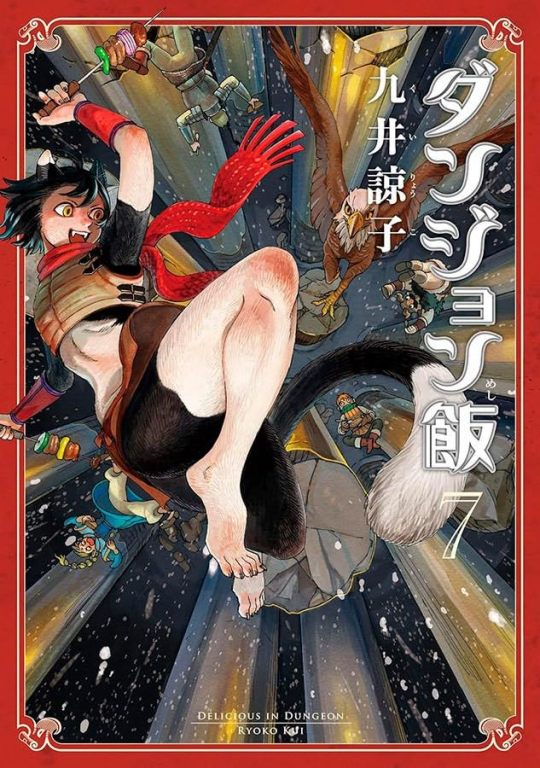
Cover illustration draft, vol. 7
The image is of focus lines converging on the character Izutsumi. This is the kind of cover, with upside down characters, which I've always wanted to try once(?) I submitted it as a trial, thinking that at this point the cover wouldn't dramatically influence sales. However, in the end, we decided it would be better not to have it upside down. (Kui)

Cover illustration draft, vol. 8
I tried blurring the mushrooms in the foreground, then I accidentally saved over it, and couldn't go back to the original. I remember apologizing that it was probably tacky, when I submitted it. (Kui)
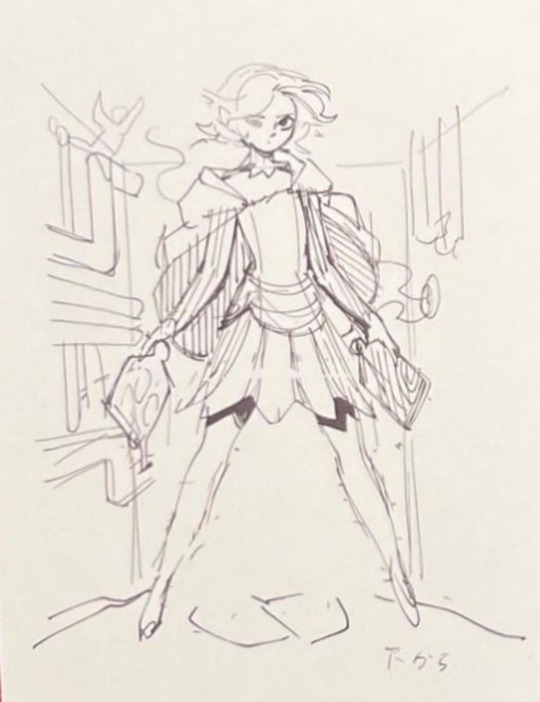
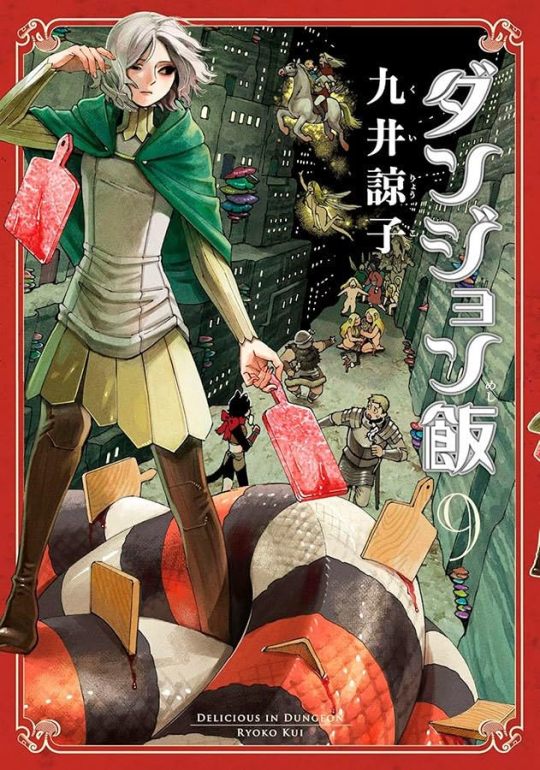
Cover illustration draft, vol. 9
I don't think snake meat is marbled at all, but if it has an unfamiliar look, people might not recognize it as meat… so I made it look like beef to make it easier to understand. (Kui)


Cover illustration draft, vol. 10
I thought it might be interesting to have more than one of the main characters on the cover again, so I added the character Falin. I remember it wasn't badly received, but it still ended up just being Thistle on his own. (Kui)
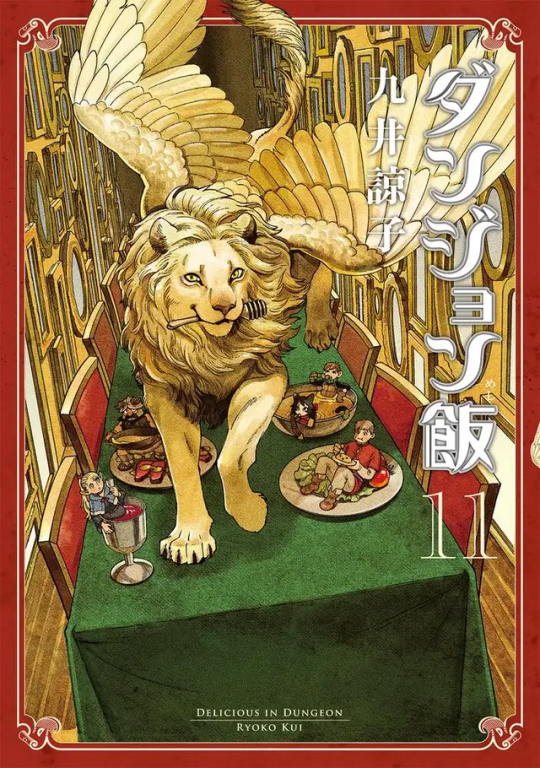
Cover illustration draft, vol. 11
I wanted this cover to be covered in shiny gold. After I finished it, it didn't have enough color, so I painted the tablecloth green, and it ended up looking like Christmas colors. (Kui)


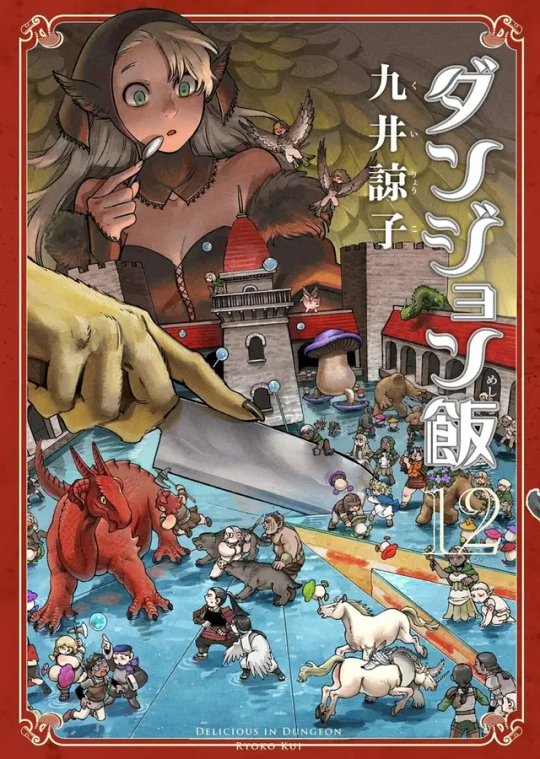
Cover illustration draft, vol. 12
Up to this point, the covers have featured one of the main characters holding cooking utensils in the foreground and a monster in the background, but I thought it might be interesting to reverse the format just before the final volume, so I drew this cover with that in mind. (Kui)

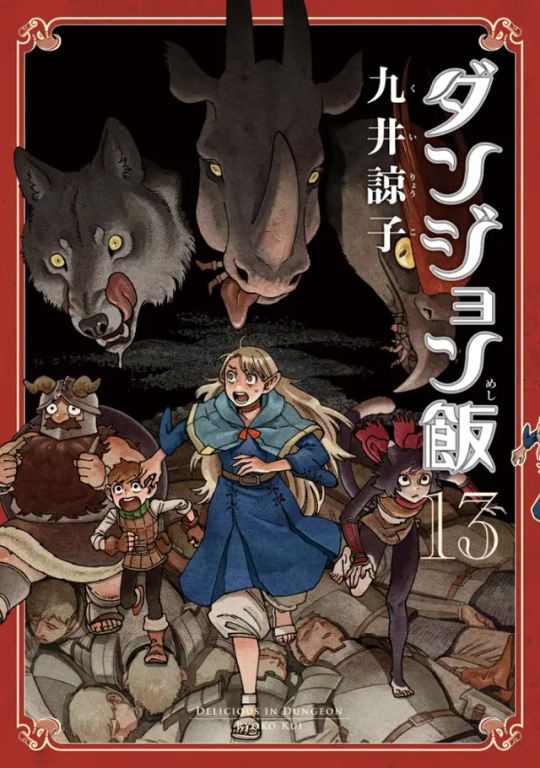
Cover illustration draft, vol. 13
volume 13 was meant to be the final one, but it was too thick to be published as a single volume, so we decided to split it into two. The question of “so, what should I draw next!?" may be at the forefront of volume 13. (Kui)
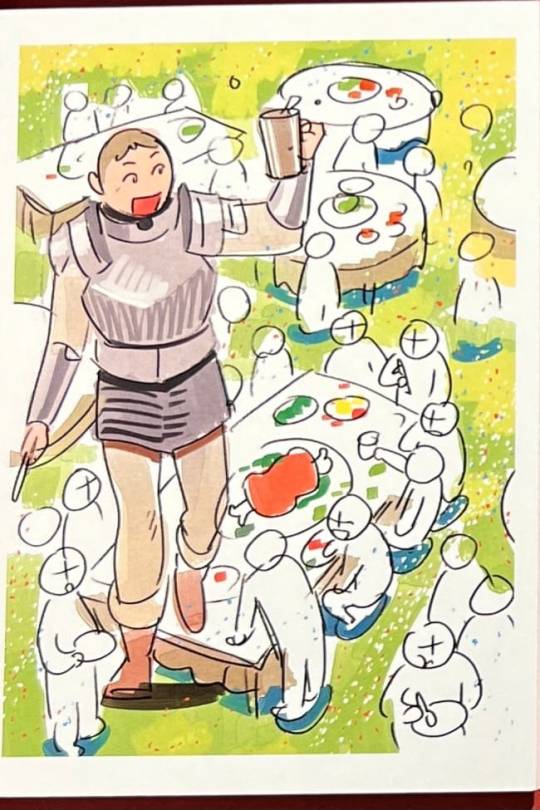

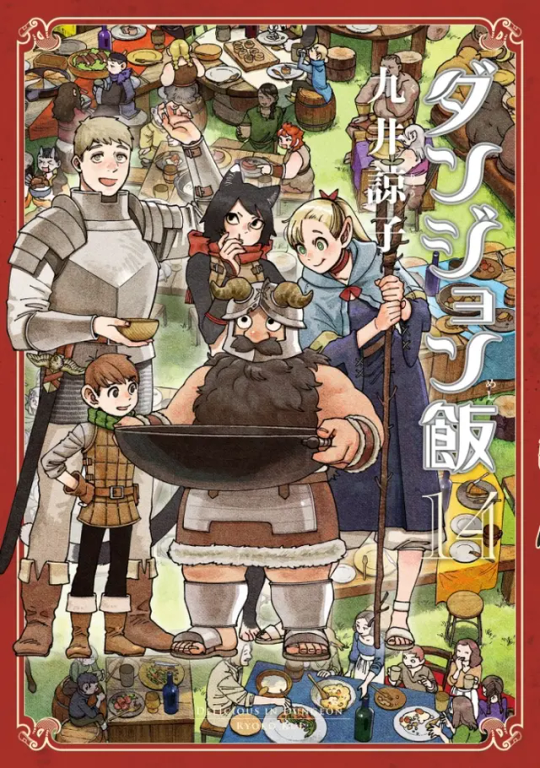
Cover illustration draft, vol. 14
I had decided that the final cover definitely needed to have everyone eating together on it, but because I was publishing two books at the same time I was pressed for time, and it was difficult to have a cover with so many characters on it. I also submitted a rough for an illustration that didn't need me to draw any crowds, but such obviously easy ideas are never adopted. (Kui)
TV anime "Delicious in Dungeon"
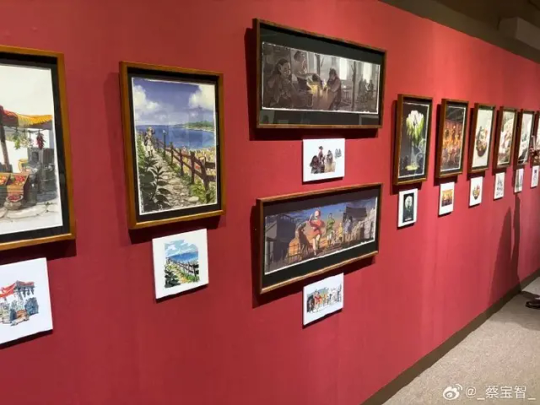
About the ending illustration.
I drew these based on the director's instruction "This kinds of pictures." I hardly ever have the chance to draw color illustrations, so it was a valuable experience for me. (Kui)
[Kui's commentary is from the english pamphlet]
#Longpost#long post#Dungeon Meshi#Delicious in Dungeon#Dungeon Meshi Spoilers#Delicious in Dungeon exhibition#Dungeon Meshi exhibition#exhibition#cover art#Ryoko Kui#Laios Touden#Marcille Donato#Chilchuck Tims#Senshi#Falin Touden#Namari#Shuro#Toshiro Nakamoto#Izutsumi#Kabru#Mithrun#Winged Lion#If you have better images from the exhibition please share with me 🙏#I'll look for some later cause i'm pretty sure I've seen better images of the cover drafts before
2K notes
·
View notes